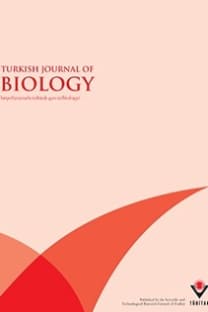Epibrassinolide activates AKT to trigger autophagy with polyamine metabolism in SW480 and DLD-1 colon cancer cell lines
Epibrassinolide (EBR), a plant-derived polyhydroxylated derivative of 5 alpha-cholestane, structurally shows similarities to animal steroid hormones. According to the present study, EBR treatment triggered a significant stress response via activating ER stress, autophagy, and apoptosis in cancer cells. EBR could also increase Akt phosphorylation in vitro. While the activation of Akt resulted in cellular metabolic activation in normal cells to proceed with cell survival, a rapid stress response was induced in cancer cells to reduce survival. Therefore, Akt as a mediator of cellular survival and death decision pathways is a crucial target in cancer cells. In this study, we determined that EBR induces stress responses through activating Akt, which reduced the mTOR complex I (mTORC1) activation in SW480 and DLD-1 colon cancer cells. As a consequence, EBR triggered macroautophagy and led to lipidation of LC3 most efficiently in SW480 cells. The cotreatment of spermidine (Spd) with EBR increased lipidation of LC3 synergistically in both cell lines. We also found that EBR promoted polyamine catabolism in SW480 cells. The retention of polyamine biosynthesis was remarkable following EBR treatment. We suggested that EBR-mediated Akt activation might determine the downstream cellular stress responses to induce autophagy related to polyamines.
Keywords:
Autophagy, epibrassinolide, polyamines LC3, spermidine,
___
- Akkoc Y, 2018, TURK J GASTROENTEROL, V29, P270, DOI 10.5152/tjg.2018.150318
- Banerjee IA, 2019, MAT SCI ENG C-MATER, V97, P451, DOI 10.1016/j.msec.2018.12.037
- Coskun D, 2015, EXP CELL RES, V338, P10, DOI 10.1016/j.yexcr.2015.08.015
- Cybulsky AV, 2017, NAT REV NEPHROL, V13, P681, DOI 10.1038/nrneph.2017.129
- DeBerardinis RJ, 2008, CELL METAB, V7, P11, DOI 10.1016/j.cmet.2007.10.002
- Eisenberg T, 2009, NAT CELL BIOL, V11, P1305, DOI 10.1038/ncb1975
- Esposito D, 2011, J MED CHEM, V54, P4057, DOI 10.1021/jm200028h
- Franke TF, 2008, ONCOGENE, V27, P6473, DOI 10.1038/onc.2008.313
- Gozuacik D, 2004, ONCOGENE, V23, P2891, DOI 10.1038/sj.onc.1207521
- Gozuacik D, 2007, CURR TOP DEV BIOL, V78, P217, DOI 10.1016/S0070-2153(06)78006-1
- Hai Y, 2017, NAT COMMUN, V8, DOI 10.1038/ncomms15368
- Jung CH, 2010, FEBS LETT, V584, P1287, DOI 10.1016/j.febslet.2010.01.017
- Kahana C, 2009, CELL MOL LIFE SCI, V66, P2479, DOI 10.1007/s00018-009-0033-3
- Kocaturk NM, 2019, EUR J PHARM SCI, V134, P116, DOI 10.1016/j.ejps.2019.04.011
- Kuryayeva F, 2019, EPIBRASSINOLIDE PROM, V40, P10
- Lee ST, 2013, PLOS ONE, V8, DOI 10.1371/journal.pone.0057708
- Liu HY, 2009, J BIOL CHEM, V284, P31484, DOI 10.1074/jbc.M109.033936
- Menon D, 2017, J BIOL CHEM, V292, P6303, DOI 10.1074/jbc.M116.772988
- Obakan P, 2015, PLOS ONE, V10, DOI 10.1371/journal.pone.0135788
- Obakan P, 2014, AMINO ACIDS, V46, P553, DOI 10.1007/s00726-013-1574-1
- Obakan-Yerlikaya P, 2017, MOL CARCINOGEN, V56, P1603, DOI 10.1002/mc.22616
- Palavan-Unsal N., 2006, Experimental Oncology, V28, P178
- Palmieri M, 2017, CELL CYCLE, V16, P1237, DOI 10.1080/15384101.2017.1337968
- Persad S, 2001, J BIOL CHEM, V276, P27462, DOI 10.1074/jbc.M102940200
- Pietrocola F, 2015, CELL DEATH DIFFER, V22, P509, DOI 10.1038/cdd.2014.215
- Rueden CT, 2017, BMC BIOINFORMATICS, V18, DOI 10.1186/s12859-017-1934-z
- SINGH S, 1990, ANAL BIOCHEM, V187, P212, DOI 10.1016/0003-2697(90)90446-G
- Song S, J CELLULAR PHYSL, V233, P3867 .
- Wang Tian, 2005, Zhiwu Shengli yu Fenzi Shengwuxue Xuebao, V31, P637
- Yue F, 2017, CANCER RES, V77, P2938, DOI 10.1158/0008-5472.CAN-16-3462
- Zhang Z, 2012, MOL CELL BIOCHEM, V361, P249, DOI 10.1007/s11010-011-1110-0
- ISSN: 1300-0152
- Yayın Aralığı: Yılda 6 Sayı
- Yayıncı: TÜBİTAK
Sayıdaki Diğer Makaleler
Timuçin AVŞAR, Şeyma ÇALIŞ, Türker KILIÇ, Baran YILMAZ, Gülden DEMİRCİ OTLUOĞLU, Can HOLYAVKİN
Kaan ADACAN, Pinar OBAKAN YERLİKAYA
Pınar OBAKAN YERLİKAYA, Kaan ADACAN
Oncogenic and tumor suppressor function of MEIS and associated factors
Fatih KOCABAŞ, Birkan GİRGİN, Medine KARADAĞ ALPASLAN
Birkan GİRGİN, Medine KARADAĞ-ALPASLAN, Fatih KOCABAŞ
Neda DAEİ-FARSHBAF, Reza AFLATOONİAN, Fatemeh-sadat AMJADİ, Sara TALEAHMAD, Mahnaz ASHRAFİ, Mehrdad BAKHTİYARİ
Dhurgham ALFAHAD, Salem ALHARETHİ, Bandar ALHARBİ, Khatab MAWLOOD, Philip DASH
Timucin AVSAR, Seyma CALİS, Baran YİLMAZ, Gulden DEMİRCİ OTLUOGLU, Can HOLYAVKİN, Turker KİLİC
